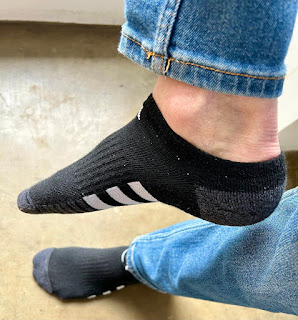In one respect, I’d have made a commendable Jehovah’s Witness. I’m not big on holidays. None of ’em. Overhyped, high expectations, forced reverie. (Seriously, what is it about changing a calendar—heck, who even has one—that warrants fireworks?) So it should come as no surprise that Pride Month almost got away from me.
I could defend my humbug homosexuality by saying I’m holding out for Vancouver’s Pride festivities which peak on August 3 and 4, but I’ll be out of town for the hoopla, not by design, I swear, just by life moving along and not specifically revolving around makeshift beer gardens on a cordoned off field and glittered up go-go boys clutching water bottles on a float that’s basically a roving rave. I prefer Go-Go’s that got the beat and profess to seal their lips.
As with most things in my life, I’m perfectly content with a lowercase pride instead of an official Pride, sponsored by Evian, three phone providers and four local financial institutions. I’ve said before that I regard the parades as the equivalent to Olympic events—once every four years is enough, eight years if I want to play the boycott card as Canada and the U.S. did in 1980.
I don’t need a month and a postscript to feel proud. I think about queer issues—pride, prejudice and other problems—year-round. I read plenty of queer books, both fiction and nonfiction. I write and post queer-related essays to this blog. I wear rainbow socks and rainbow high-tops whenever I feel like it.
But then a fun opportunity crossed my mind in the form of a pamphlet in a coffee shop where I was writing. It promoted several walking tours offered by Forbidden Vancouver. Since I live close to two of the oldest parts of the city, Gastown and Chinatown, and where cruise ships dock, I frequently walk by tours in progress, the tour guide usually dressed in something that reminds me of Sherlock Holmes or a Jane Austen character. A history buff, twice removed, I sometimes consider lingering within earshot to hear what people are learning about “my” city. I suspect most people know these tours are highly curated to showcase a lurid underbelly populated by mobsters, murderers and a cast of creepers that would give Taylor Swift three double albums worth of new material on haters.
However, in addition to offerings like “The Dark Secrets of Stanley Park” and “The Lost Souls of Gastown,” there is “The Really Gay History Tour.” Local history, local P/pride. I’m having food issues lately so, rather than take a friend for his annual birthday dinner—another celebration(!)—I asked if he’d like to join me for a two-hour “really gay” walk.
Tour booked.
Here’s the pamphlet description:
It’s time for Vancouver’s secrets to come out of the closet. Drag kings, two-spirit warriors, gay church ministers: the queer heroes who fought for change.
Our guide, Glenn Tkach, who specifically researched and put together the tour, met us on busy Burrard Street. He was easy to spot in his pink felt hat, a pink t-shirt with the tour name on it and gray Converse high-tops with pink laces. (I dressed for the occasion in rainbow unicorn socks and rainbow high-tops. I’m not the total humbug I cast myself to be.)
My friend moved to Vancouver in 1991 and my first stint in the city started in 1994 so much of what was shared was already known to us. Still there were several sparkly bits tossed in—a song by the Village People connected to Vancouver!—that had the dozen of us joining the midweek tour (also offered on Sundays) entertained and better informed about stories that had previously been vaguer notions.

ted northe: a proud pioneer in
Vancouver and Canada's
queer rights movement
Today, near St. Paul’s Hospital, there is an alley the bears the street sign, ted northe Ln, named for a gay activist who wasn’t big on capital letters, but was huge in helping decriminalize homosexuality in Canada. A persistent activist, he showed up in August 1958 on the steps of the downtown courthouse, dressed in drag, flanked by four supporters and holding a sign that said, “I am a human being.” His efforts paid off with northe having a direct link to the 1969 legislation championed by Prime Minister Pierre Elliott Trudeau to officially decriminalize homosexuality and homosexual acts. I won’t share more because I feel the tour is highly worthwhile and oversharing may lead someone to think they’ve already reached their learning max.
Tour, dah-ling. You’ll sashay away with a little more substance.
One of the wonderful things about Glenn’s storytelling is it put bits and pieces of Vancouver’s queer history together in a way to see patterns and themes…as history is wont to do. It’s no surprise that our history includes oppression, discrimination and empowerment, but it’s more impactful when considered as a whole. Moreover, there was significant division across and between various sectors of what today is our supposedly neat, cohesive 2SLGBTQI+ community. (This is the acronym used by the Government of Canada.)
In all, it was a fabulous tour, as a queer tour should be. Pride, as I understand it is about knowing and celebrating ourselves, but it’s also about knowing where we came from as a community, what our present challenges are and where we are going. I’m prouder from the partaking.





































